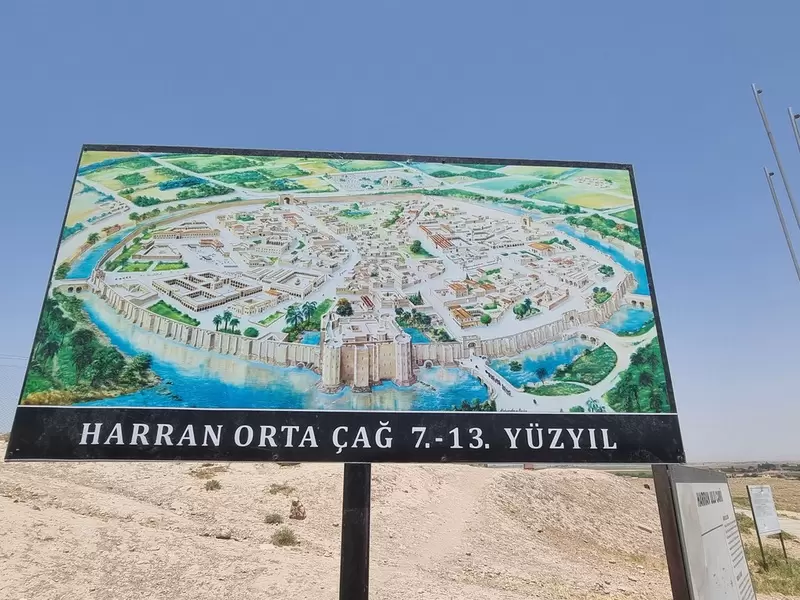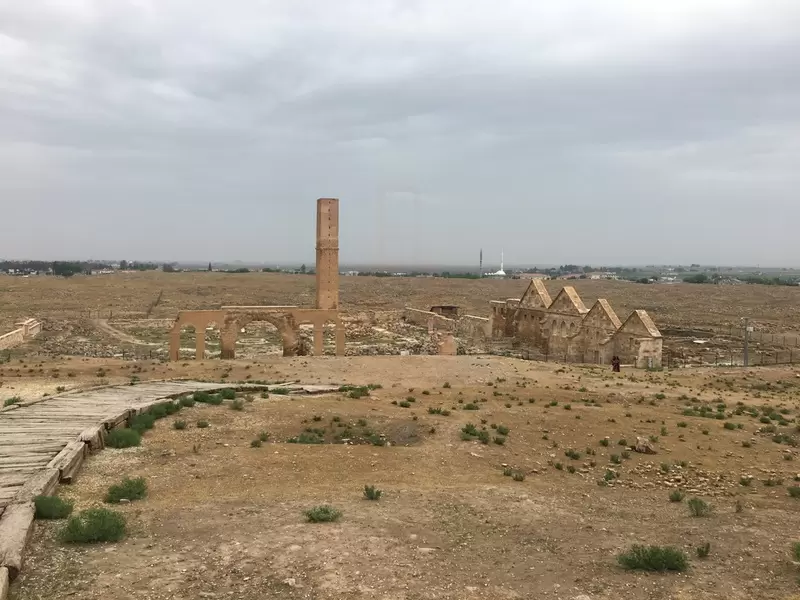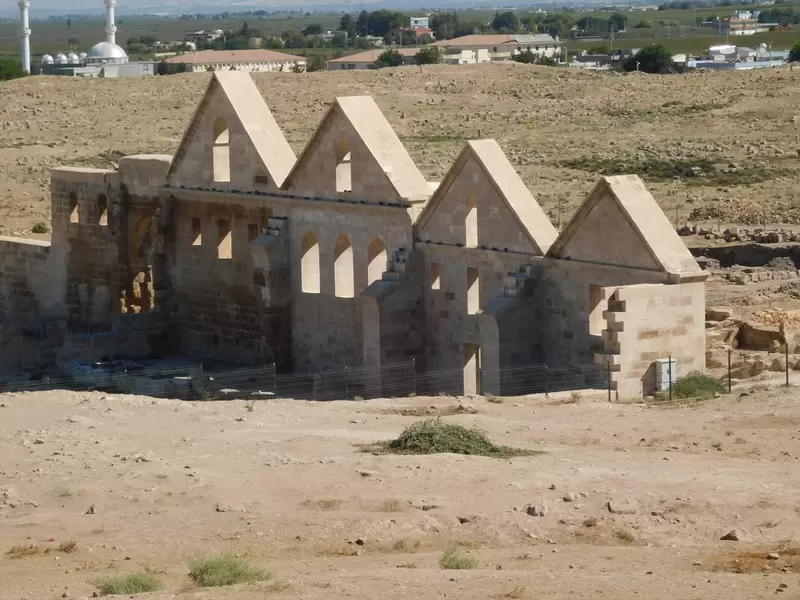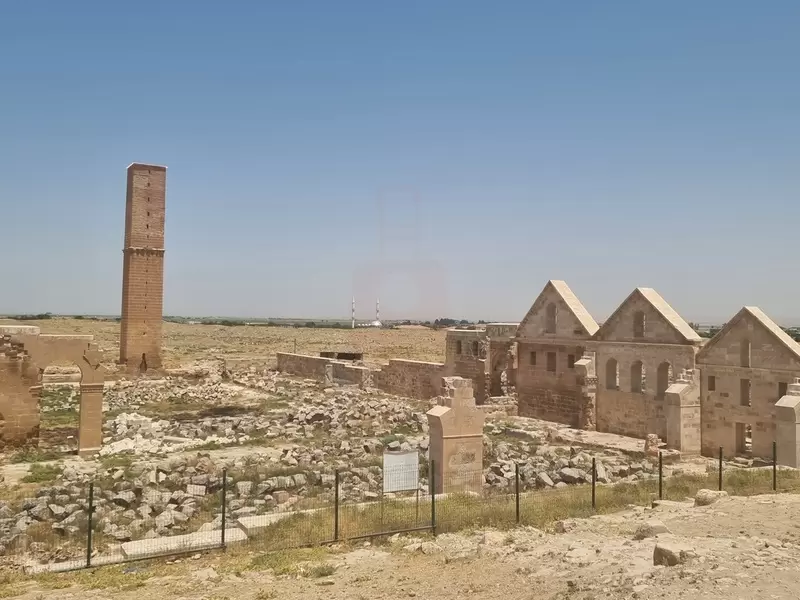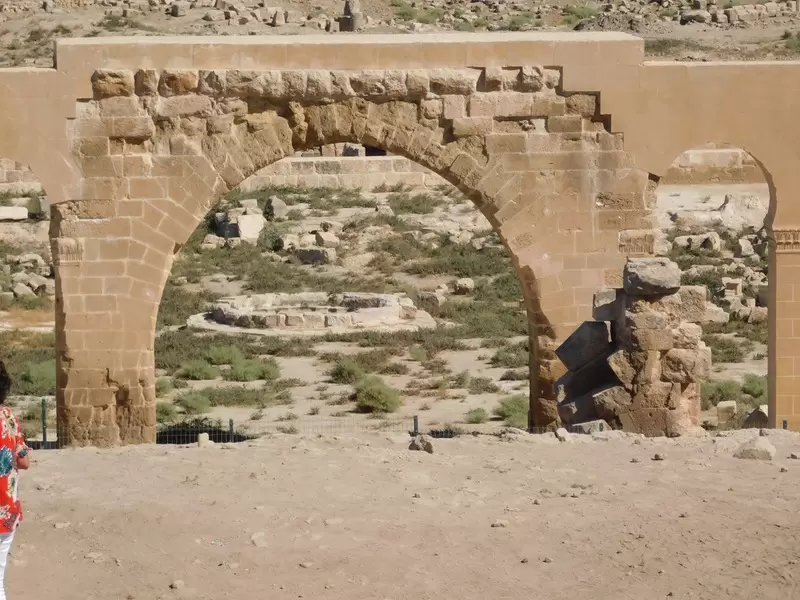
Welcome to Harran Ancient City! Located in southeastern Turkey, near the city of Şanlıurfa, Harran is a historically significant and enchanting site with a rich past that stretches back thousands of years. From its well-preserved ancient ruins to its unique architectural heritage, Harran invites visitors to explore its historical treasures and immerse themselves in its cultural tapestry. Known as one of the oldest continuously inhabited cities in the world,
Harran has a rich past that dates back thousands of years and is
associated with various civilizations.
Historical Background:
Harran is one of the oldest continuously inhabited cities in the world, with a history that can be traced back to at least the 3rd millennium BCE. It served as an important hub for trade and culture, evolving into a major center for various civilizations, including the Assyrians, Babylonians, Persians, Greeks, Romans, and Arabs. Harran's strategic location along ancient trade routes contributed to its cultural and historical significance.
Harran has a history that spans over 6,000 years, with evidence of human settlement dating back to the Bronze Age. The city was an important center for trade, religion, and scholarship throughout its existence. It was ruled by different civilizations, including the Assyrians, Babylonians, Persians, Romans, and Byzantines.
The city is mentioned in ancient texts, including the Bible, where it is referred to as Haran. Harran was also renowned as a center of astronomy and astrology during the Hellenistic period, with scholars studying the stars and making significant contributions to the field.
Archaeological Highlights:
One of the most notable architectural features of Harran is its beehive-shaped houses, locally known as beehive houses or Harran houses. These unique structures are made of mud bricks and have conical roofs, providing insulation from the harsh desert climate. The design of the houses is believed to have remained relatively unchanged for centuries, offering a glimpse into the traditional architecture of the region.
Another prominent landmark in Harran is the ruins of the ancient city
walls, which once surrounded the settlement for protection. These
walls, made of mud bricks, are a testament to the city's historical
significance and provide an opportunity to envision its former grandeur. Exploring Harran Ancient City offers a captivating journey through time. While the ancient city is mostly in ruins, several key sites and structures stand out:
1. Mud-Brick Houses: One of the defining features of Harran's architecture is its unique mud-brick houses. These traditional dwellings, known as beehive houses or honeycomb houses, have a cylindrical shape with conical roofs. They provide insulation against the extreme desert climate and have been used by the locals for centuries. Some of these houses have been preserved and can be visited to gain insights into the traditional lifestyle of the region.
2. Harran University (Harran Üniversitesi): Harran was home to one of the oldest Islamic universities in the world. Founded in the 8th century CE, it became a prominent center of learning, attracting scholars from various disciplines. While the original university no longer exists, a modern institution named Harran University stands in its place, contributing to the academic legacy of the region.
3. Ruins of Harran: The archaeological site of Harran features the remnants of ancient structures, including city walls, defensive towers, and the remains of a grand mosque. These ruins provide glimpses into the city's former glory and architectural achievements.
Visiting Harran Ancient City:
When visiting Harran, travelers can explore the ancient ruins,
experience the traditional architecture, and immerse themselves in the
cultural heritage of the region.
The beehive houses of Harran are a major attraction, and visitors can enter some of the well-preserved houses to get a sense of the living conditions and architectural style of the past. These houses are unique and offer a glimpse into the traditional lifestyle of the locals.
The ruins of the ancient city walls and other archaeological remnants can also be explored. While some structures are in ruins, they still evoke a sense of the city's historical importance and provide insight into its past glory.
Additionally, Harran is home to the University of Harran, which was established in the 7th century CE and played a crucial role in Islamic scholarship. The university's ruins can be visited, and it is fascinating to imagine the intellectual pursuits that took place there centuries ago.
It is advisable to check the local conditions and any travel advisories before planning a visit to Harran due to its proximity to the Syrian border. It is also recommended to wear comfortable footwear, bring sun protection, and carry sufficient water, as the region has a dry and arid climate.
Harran Ancient City offers a unique opportunity to delve into the history, architecture, and cultural heritage of one of the oldest continuously inhabited cities in the world. Exploring its ancient ruins and experiencing the traditional beehive houses allow visitors to connect with the past and appreciate the resilience and legacy of the people who called Harran home throughout the ages.
Visiting Tips:
- Harran is located in a desert region, so it's advisable to dress appropriately for the climate, with loose, light clothing and sun protection.
- Comfortable footwear is recommended for exploring the ruins and walking on uneven terrain.
- Engaging a local guide can greatly enhance your visit, as they can provide historical and cultural insights about the ancient city.
Nearby Attractions:
While visiting Harran, you can also explore other attractions in the Şanlıurfa region:
- Göbeklitepe: Located near Şanlıurfa, Göbeklitepe is an extraordinary archaeological site and the world's oldest temple complex. It offers a unique opportunity to witness the origins of human civilization and explore ancient ruins.
- Balıklıgöl and the Cave of Abraham: In the heart of Şanlıurfa, Balıklıgöl is a sacred pool believed to be the place where the prophet Abraham was thrown into the fire. Nearby, the Cave of Abraham is a significant pilgrimage site with religious and historical importance.
- Şanlıurfa Castle: This ancient fortress overlooks the city and offers panoramic views. It contains various historical structures and is a testament to the region's rich history.
In conclusion, visiting Harran Ancient City allows you to step back in time and witness the remnants of a vibrant ancient civilization. Explore the unique mud-brick houses, delve into the historical ruins, and immerse yourself in the cultural heritage of this remarkable city.
Please note that archaeological sites are subject to ongoing research, restoration, and accessibility may vary. It's advisable to check for the latest information and guidelines from official sources before planning your visit to Harran Ancient City.
